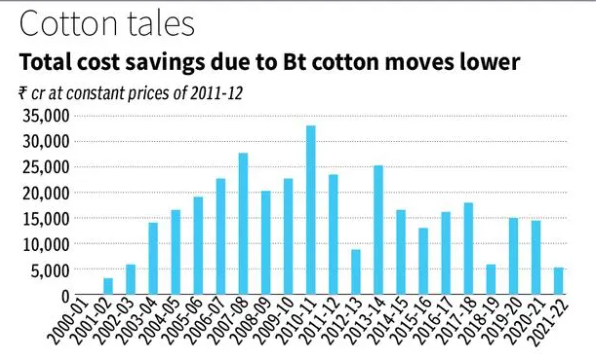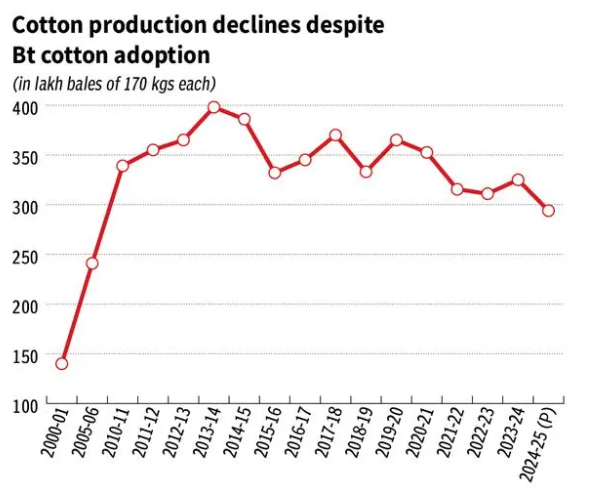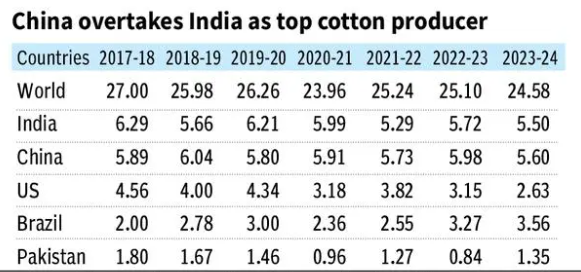7667766266
enquiry@shankarias.in
Mains Syllabus: GS III - Major crops-cropping patterns in various parts of the country.
Cotton production has declined in the last decade.
Bt Cotton, which is “genetically modified for resistance to bollworms”, was introduced in India in 2002, and has commanded over 95 % of India’s cotton cultivation area by 2014.

India’s Cotton production has been on a declining path since the peak of 398 lb (lb; 1 lb=170 kg), in 2013-14 and reaching in the 2024-25 marketing year (October-September) to just over 294 lakh bales.

